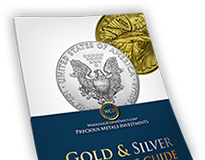- Gold $0.00 $0.00
- Silver $0.00 $0.00
- Platinum $0.00 $0.00
- Palladium $0.00 $0.00
Pricing:
| QUANTITY | E-CHECK/WIRE | CREDIT CARD |
|---|---|---|
| Any | $4,205.26 | $4,380.62 |

Get Our Free
Gold & Silver
Investor's
Guide
Description:
If you like to avidly collect coins, there's a common risk of you inadvertently acquiring counterfeit coins. To help prevent this, grading services can verify coins type and authenticity; however, you shouldn't overlook the rich potential of buying a raw Liberty Double Eagle. The numismatic term raw is used for a coin that is not inside a holder from a leading coin grading service. An example of such a service can be the Professional Coin Grading Service; the Numismatic Guaranty Corporation can be another example. Typically, one of these organizations will use a plastic holder to encapsulate a coin after grading its condition.
However, resist simply classifying all encased pieces as graded. It doesn't matter if a coin is in some other form of plastic case; the coin remains raw if no major grading body has graded and encapsulated it. You might sometimes see "encapsulated" described as "slabbed" instead. Therefore, raw coins include loose ones in home-sited collecting albums. Still, you should also avoid assuming that a raw coin will always trail a graded one in value. A raw coin is described as such simply because it is not verified. There is no solid reason why acquiring a raw coin and finding it to be in Gem - that is, MS65 or higher quality - condition is always completely out of the question.
Hence, for thoroughly knowledgeable numismatists, raw coins can be particularly worth looking out for. These coins can be delightfully inexpensive compared to slabbed pieces; however, if you are skilled in assessing a coin's condition without needing external assistance, you might be capable of recognizing when a raw coin has a condition making it worth more than its asking price. The raw coin we are promoting on this page of our website is a Liberty Double Eagle. This coin is 90 percent gold and 10 percent copper, and it comes from a series that, from 1850, was in production for commerce until its discontinuation under Theodore Roosevelt in 1907.
It was a relative, Franklin D. Roosevelt, who cut away at the Liberty Double Eagle's prominence by recalling gold coins in 1933. However, while this double eagle series was still in production, millions of the coins went overseas through international transactions. Plenty of these pieces were stored in bank vaults, from which high numbers of them have been repatriated in reaction to demand from U.S. citizens.
Holding gold can assist you in keeping safe from adverse effects of inflation. However, the chance to own a Liberty Double Eagle could secure your interest mainly due to the designs. Inscribed into that metal, 0.9675 of a troy ounce of which makes up gold, is lettering reading "UNITED STATES OF AMERICA" and the face value, indicated as "TWENTY DOLLARS" or "TWENTY D." It should now be clear then, that having this type of raw coin can be a highly rewarding experience.
Coin Highlights:
- Classification as "raw"; i.e. unverified
- Potential to enable an inexpensive start to coin collecting
- Diameter reaching 1.342 inches
Orders placed for products that are not a specific year will be fulfilled with coins of any date, based on availability. Orders of multiple coins may be filled with the same year or a variety of years.
Specifications:
| Product Type | Coin |
|---|---|
| Coin Series | Pre-33 Gold |
| Purity | 90% |
| Mint/Refinery | U.S. Mint |
| Metal Type | Gold |
| Face Value | $20 |
| Grade | Raw |
| Coin Type | Bullion |
| Modern or Historical | Pre-33 |
| Year | Varies |
| Metal Weight | 0.9675 troy oz |







